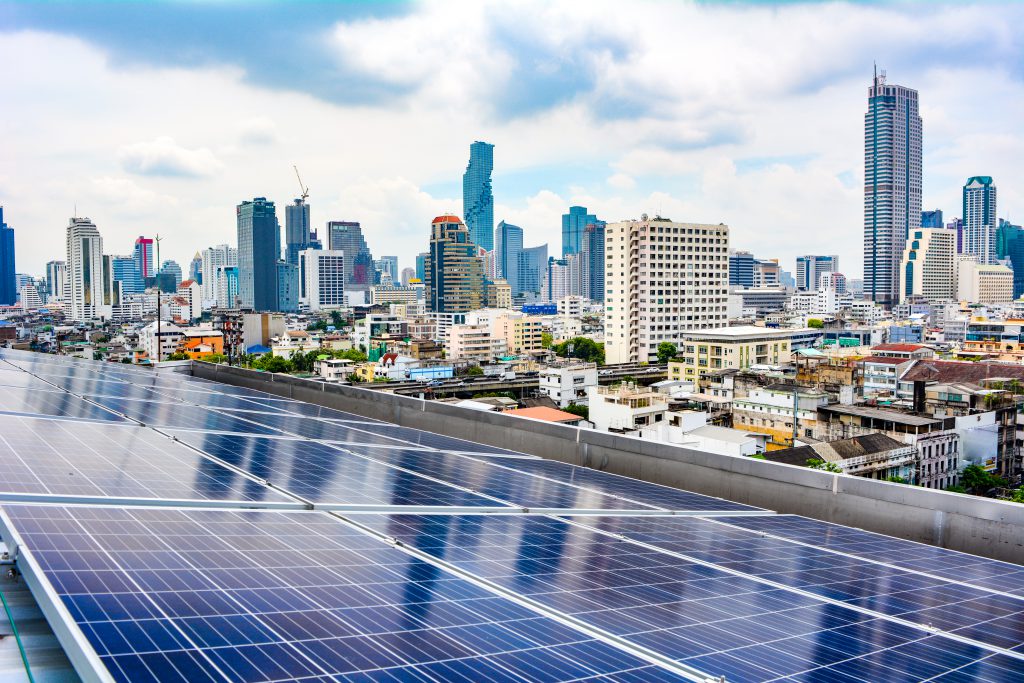Energy efficiency and alternative energy sector
GHG emissions in the energy sector form the largest part of total emission. As most GHG emissions in the energy sectors in Bangkok are related to those from buildings, mitigation measures are focused on introducing energy efficiency and renewable energy. The Master Plan sets the BAU GHG emissions and the emissions reduction targets in line with the EEDP and AEDP, which were also incorporated in the Thailand Nationally Appropriate Mitigation Action (NAMA) submitted to the United Nations Framework Convention on Climate Change (UNFCCC). In this regard, the BMA has been making efforts to drive energy efficiency measures in buildings and facilities which belong to the BMA itself. Therefore, under the Master Plan, the BMA has promoted energy efficiency and renewable energy measures for non-BMA actors namely private building owners and business operators, in collaboration with the Royal Authorities.
For the estimate of GHG emission quantity in energy efficiency and alternative energy sector under the Master Plan, GHG emissions were to increase from 25.60 MtCO2e in 2013 to 30.10 MtCO2e which is the BAU by 2020. However, for the implementation of the Master Plan, the target for GHG mitigation was set at 26.85 MtCO2e by 2020, which is about 13.22%. According to the Comprehensive Review of the Progress of Implementation of the Master Plan, the actual GHG emissions reached 25.81 MtCO2e in 2016 whereas the emissions slightly increased from the baseline of 25.60 million tCO2e in 2013, but they are still lower than BAU emissions of 2016.

0
MtCO2e
2020 Target for GHG emission mitigation in energy efficiency and alternative energy sector
In progress
Target
0
MtCO2e
by 2020 and the GHG emission mitigation can be calculated at 13.22 %, compared to the BAU by 2020 (30.94 MtCO2e)
Current result
0
MtCO2e
by 2016, compared to the BAU by 2020 (26.52 MtCO2e)


